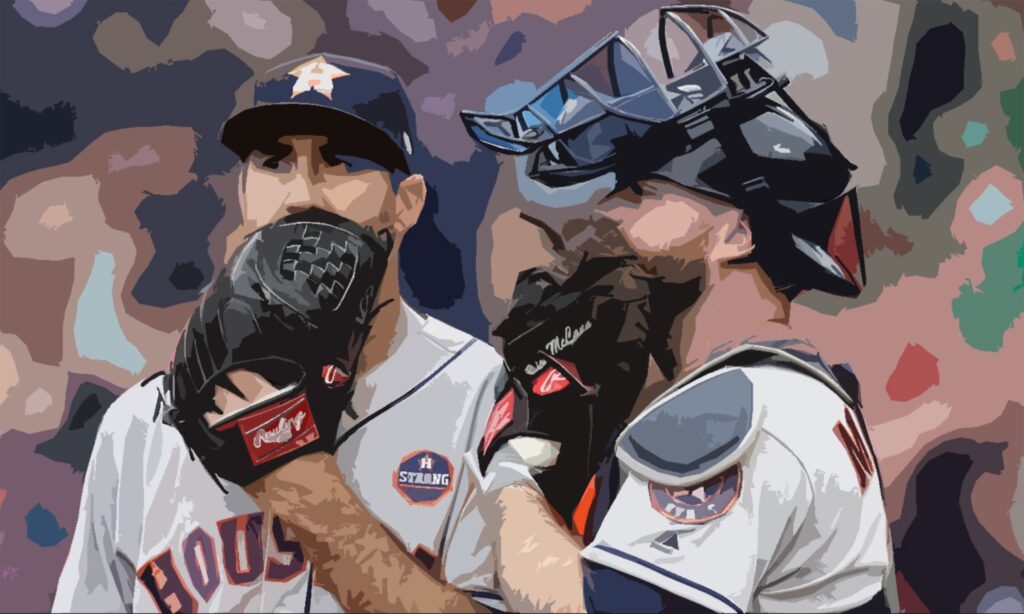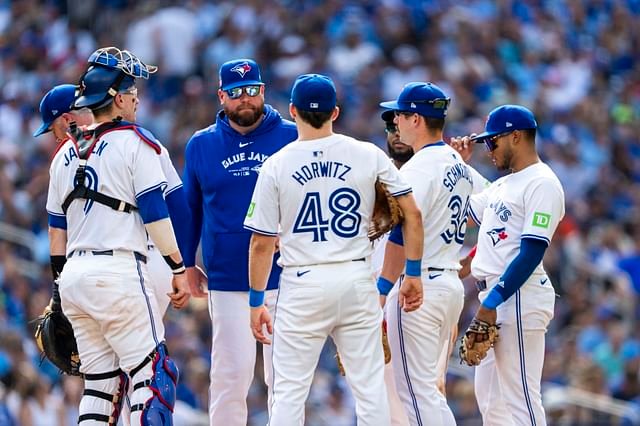MVR stands for “Mound Visits Remaining” in baseball. It shows how many more times a team can visit the pitcher’s mound during a game.
Understanding MVR is crucial for baseball fans and players. It helps manage the game and keeps the pace steady. Each team gets a limited number of mound visits in each game. This rule ensures the game flows smoothly and avoids unnecessary delays.
Knowing how MVR works can enhance your baseball experience. It can also give you insights into team strategies. In this post, we will explore the details of MVR, its importance, and how it affects the game. Stay with us to learn more about this interesting aspect of baseball.

Credit: www.gaimday.com
Historical Background
Understanding the historical background of MVR in baseball provides insight into its importance. This section covers its origins and how it has evolved over time.
Origins Of Mvr
The term MVR stands for Mound Visit Remaining. It tracks the number of visits a team can make to the pitcher’s mound during a game. The concept of tracking mound visits began to take shape in the early 20th century.
Before the official introduction, teams and managers managed mound visits informally. They used these visits to strategize, motivate pitchers, and sometimes to give relief pitchers more time to warm up.
Evolution Over Time
The evolution of MVR has been significant over the years. Initially, there were no strict rules on the number of mound visits. This led to longer game durations and disrupted game flow.
In 2018, Major League Baseball (MLB) introduced a rule limiting teams to six mound visits per game. This rule aimed to speed up the game and make it more exciting for fans.
The new rule included some exceptions, such as visits involving injuries or changes in pitchers. The MVR rule has since become a standard part of baseball strategy.
Mvr In Modern Baseball
Baseball has evolved with time. One of the significant changes is the inclusion of new metrics and rules to improve gameplay. MVR (Mound Visits Remaining) is one such metric that has gained prominence in recent years. Let’s explore how MVR is used in modern baseball.
Current Usage
Teams now have a limit on mound visits. This rule helps speed up the game. Each team is allowed six mound visits per game. This includes visits by managers, coaches, and players.
MVR is displayed prominently on the scoreboard. Fans and players can easily track how many visits are left. This simple addition has changed strategies. Teams must think carefully before using a visit.
Implementation In Games
The implementation of MVR has been smooth. Umpires enforce the rule strictly. If a team exceeds its visits, the umpire will issue a warning. Further violations can lead to penalties.
Coaches have adapted quickly. They now plan visits more strategically. This ensures they can address critical moments without running out of visits. Players also benefit. They can communicate better knowing visits are limited.
| Mound Visit Type | Counts Towards MVR |
|---|---|
| Manager/Coach Visit | Yes |
| Player Visit | Yes |
| Injury Visit | No |
MVR has streamlined the game. It keeps the pace brisk and engaging. Fans appreciate the quicker gameplay. The rules are simple but effective. They ensure smooth play and strategy.
Impact On Game Strategy
The term MVR, or Mound Visits Remaining, has a significant impact on game strategy in baseball. It limits the number of times a team can visit the pitcher’s mound during a game. Understanding how to manage these visits can influence the outcome of the game.
Manager Decisions
Managers need to be strategic about their mound visits. Each visit can change the flow of the game. They must decide when to offer advice or calm the pitcher. Using visits wisely can prevent runs and errors. Wasting visits can leave them without options in critical moments.
Player Performance
Players, especially pitchers, feel the impact of MVR rules. A well-timed visit can boost a pitcher’s confidence. It can also provide a much-needed break. On the other hand, knowing visits are limited can add pressure. Pitchers may feel they must solve problems on their own. This can affect performance and game dynamics.
Statistical Analysis
Understanding the impact of MVR (Mound Visits Remaining) in baseball requires statistical analysis. This helps teams make informed decisions during games. The analysis involves careful data collection and interpretation. Let’s dive into how this works.
Data Collection
Data collection is the first step. Teams track every mound visit. They note the time, the reason, and the outcome. This information is then added to a database. The data helps teams understand patterns. They can see how mound visits affect game results.
Interpretation Of Mvr Stats
Interpreting MVR stats is critical. Teams analyze the collected data. They look for trends and correlations. For instance, they see if more mound visits lead to fewer runs. This helps in making strategic decisions. Coaches decide when to use mound visits wisely. They aim to maximize their impact while staying within allowed limits.
Fan Perspective
For baseball fans, understanding the game is key to enjoyment. Many terms and abbreviations come up, and one of them is MVR. But what does MVR mean in baseball? Let’s dive into the fan perspective to see how it enhances the experience and clears up common misconceptions.
Enhancing Game Experience
Knowing what MVR means can make the game more enjoyable. MVR stands for Mound Visits Remaining. It shows how many times a coach or player can visit the pitcher’s mound. This limit keeps the game moving faster.
Fans appreciate the pace of the game. It prevents long delays and maintains excitement. Watching the scoreboard for MVR adds another layer to the viewing experience. Fans discuss strategies and predict the next moves based on mound visits.
Common Misconceptions
Some fans think MVR is only for pitchers. This is not true. Any player or coach going to the mound counts as a visit. Another misconception is that MVR only applies to major league games. In reality, it is used in minor leagues too.
Understanding MVR helps fans follow the game better. They learn why certain decisions are made and how they impact the game. Clearing up these misconceptions makes the sport more enjoyable and engaging.
Comparisons With Other Metrics
Understanding the various metrics in baseball can be challenging. One such metric is MVR, short for Mound Visits Remaining. This metric tracks the number of mound visits a team has left in a game. Let’s explore how MVR compares with other baseball metrics.
Differences And Similarities
MVR is unique because it focuses on mound visits. Other metrics like ERA (Earned Run Average) and WHIP (Walks plus Hits per Inning Pitched) track pitcher performance. MVR, on the other hand, tracks game strategy. It helps managers decide when to visit the mound. ERA and WHIP focus on results. MVR focuses on decisions.
Both MVR and pitch count metrics are linked to pitching. Pitch count tracks pitches thrown, while MVR tracks visits to the mound. Both metrics aim to manage pitcher fatigue. They help managers make strategic choices during the game.
Complementary Metrics
MVR works well with other pitching metrics. It complements pitch count, ERA, and WHIP. Together, these metrics provide a complete view of pitcher performance and strategy. Using MVR with pitch count helps manage pitcher workload.
Pairing MVR with ERA and WHIP helps in strategic decisions. For instance, a high ERA might mean more mound visits are needed. A high WHIP could indicate a struggling pitcher. MVR helps decide when to intervene. These metrics together offer a fuller picture of the game.
Future Of Mvr
As baseball continues to evolve, the future of MVR (Mound Visits Remaining) is becoming a topic of great interest. This section delves into potential changes and technological advances that could shape the way MVR is used in the game.
Potential Changes
The current rules for MVR might see adjustments to improve the pace of play. Teams could get fewer mound visits per game. This change would speed up games and make them more exciting for fans.
Another possible change is the introduction of penalties for excess visits. If a team exceeds their allowed visits, they might face in-game penalties. These penalties could include loss of a strike or ball. This rule would encourage teams to manage their visits better.
Technological Advances
Technology is playing a bigger role in baseball. Future MVR rules might integrate advanced tech to monitor visits more accurately. For example, wearable tech could track pitchers’ fatigue levels. Coaches would get real-time data, helping them decide when to visit the mound.
Another exciting development is the use of AI for strategic decisions. AI could analyze game situations and suggest the best times for mound visits. This technology could give teams a competitive edge, making the game more strategic.
Technological advances could also include automated systems to track MVR. These systems would ensure accurate record-keeping and reduce human error. The use of such technology would make the game fairer and more transparent.
| Potential Changes | Technological Advances |
|---|---|
| Fewer mound visits per game | Wearable tech for pitchers |
| Penalties for excess visits | AI for strategic decisions |
| Better management of visits | Automated MVR tracking |

Credit: teamfanfares.com
Credit: www.reddit.com
Frequently Asked Questions
What Is The Meaning Of Mvr In Baseball?
MVR stands for Mound Visits Remaining. It refers to the number of visits a team can make to the pitcher’s mound during a game.
How Many Mound Visits Are Allowed In Baseball?
Teams are allowed five mound visits per game. This rule helps speed up the pace of play in baseball.
Why Are Mound Visits Limited?
Limiting mound visits helps maintain the flow of the game. It also prevents unnecessary delays and keeps the game engaging for fans.
Do All Mound Visits Count Toward The Limit?
No, not all mound visits count. Exceptions include visits for injuries, pitching changes, and offensive conferences.
Conclusion
Understanding MVR in baseball is essential for fans. It stands for mound visits remaining. MVR helps manage pitcher interactions. Knowing this rule can enhance your game experience. You’ll better appreciate strategy during games. Keep following your favorite teams and players.
Enjoy the game with this new knowledge. Baseball is not just about hits and runs. It’s also about strategy and rules like MVR. Stay curious and enjoy the sport!





